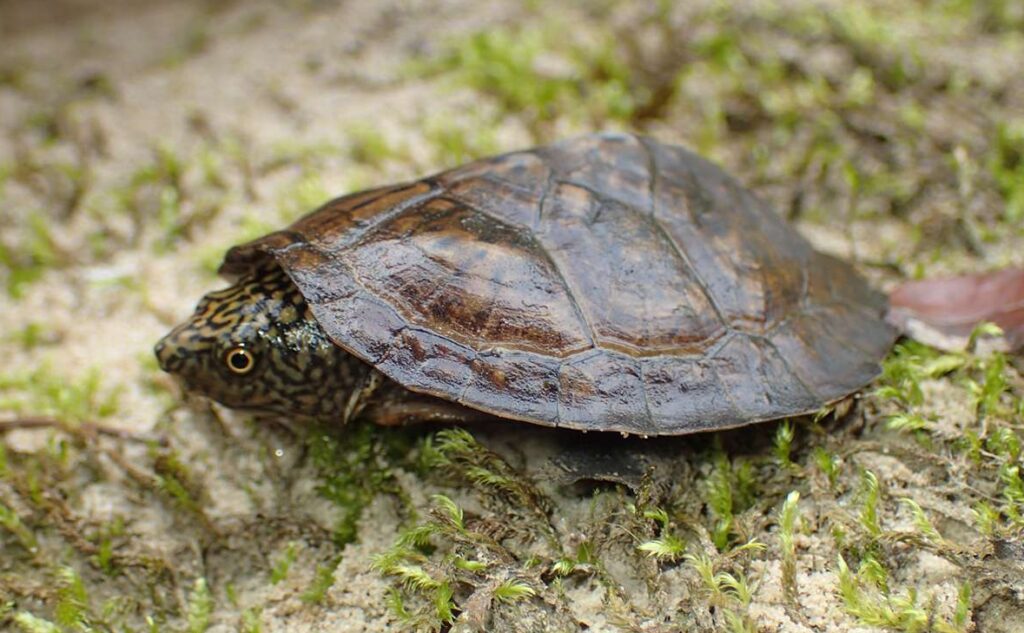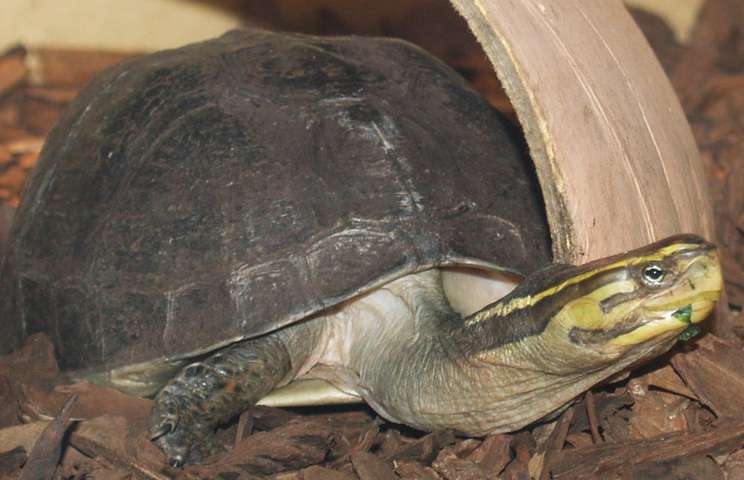
Dangerously threatened, the flattened musk turtle is unique to the Black Warrior River watershed in Alabama. The name “flattened Musk turtle” refers to the turtles’ look, which is flattened, as though somebody had stepped on it.
They have black spots on their dark to yellowish-brown shells. Flattened Musk turtles are predators that eat mollusks, worms, tiny fish, insects, and amphibians.
Care as a Pet

Housing
The Sternotherus depressus population is confined to a particular river system and does not have a wide geographic distribution. This musk turtle enjoys clear streams, just like other musk turtles do. Lakes and little rivers also contain them. They favour bodies of water that have a rocky or sandy substrate. When creating a habitat for these little turtles, this information must be considered. This turtle requires a precise aquatic setup. Flattened musk turtles ought to be kept in a watery setting. The flattened musk turtles should be able to survive in a tank with a water capacity of 40 gallons. For adults, the water must be at least 8 to 12 inches deep, while hatchlings only need 4 inches. For the turtle to swim comfortably, the tank must be long and wide enough.
Feed
The Sternotherus depressus eats meat, just like other kinosternidae. They eat nearly solely invertebrates like mussels, clams, and mollusks in the wild, crushing them with their strong teeth. Juveniles that are smaller typically eat aquatic insects. Because they eat primarily mollusks, the flattened musk turtles are specifically molluscivora. The musk turtles that have been flattened consume commercial aquatic turtle feeds and treats like Omega One Natural Protein Formula and Tetra ReptoMin Floating Food Sticks. Small snails, insects, and even water plants can complement this (non-toxic). Additionally, you ought to provide calcium and vitamins to their food. This will make sure they receive all the nutrients they require to grow. Juveniles should be fed every other day or everyday, whereas flattened musk turtles should be fed two to three times per week. Give them as much food as they can consume in a few seconds.
Breeding
Turtle methods of reproduction in the wild are known. They are difficult to breed in captivity. Breeding has only sometimes and with little success. Female flattened musk turtles construct little nests close to the water bodies they live in. Typically, they only lay two eggs each clutch. There is an incubation period of 45 to 122 days. Males mature between four and six years after conception. Females need six to eight more years to mature than males.
Table





